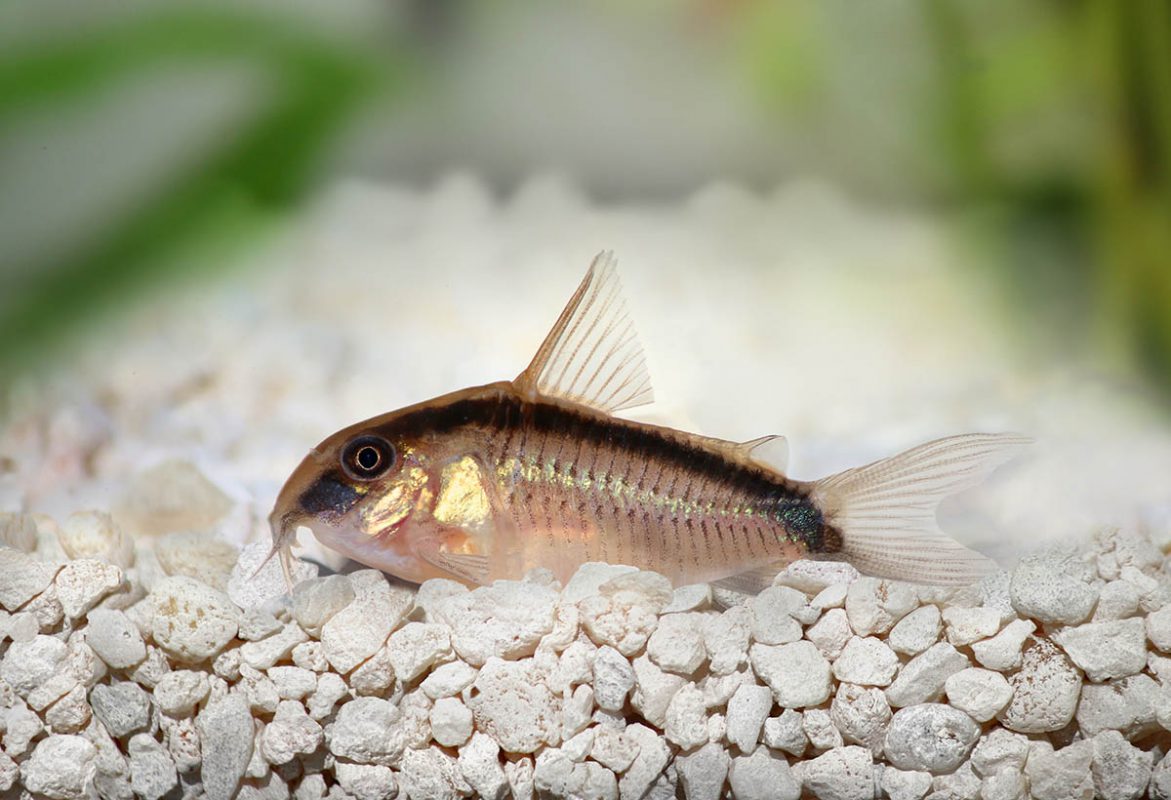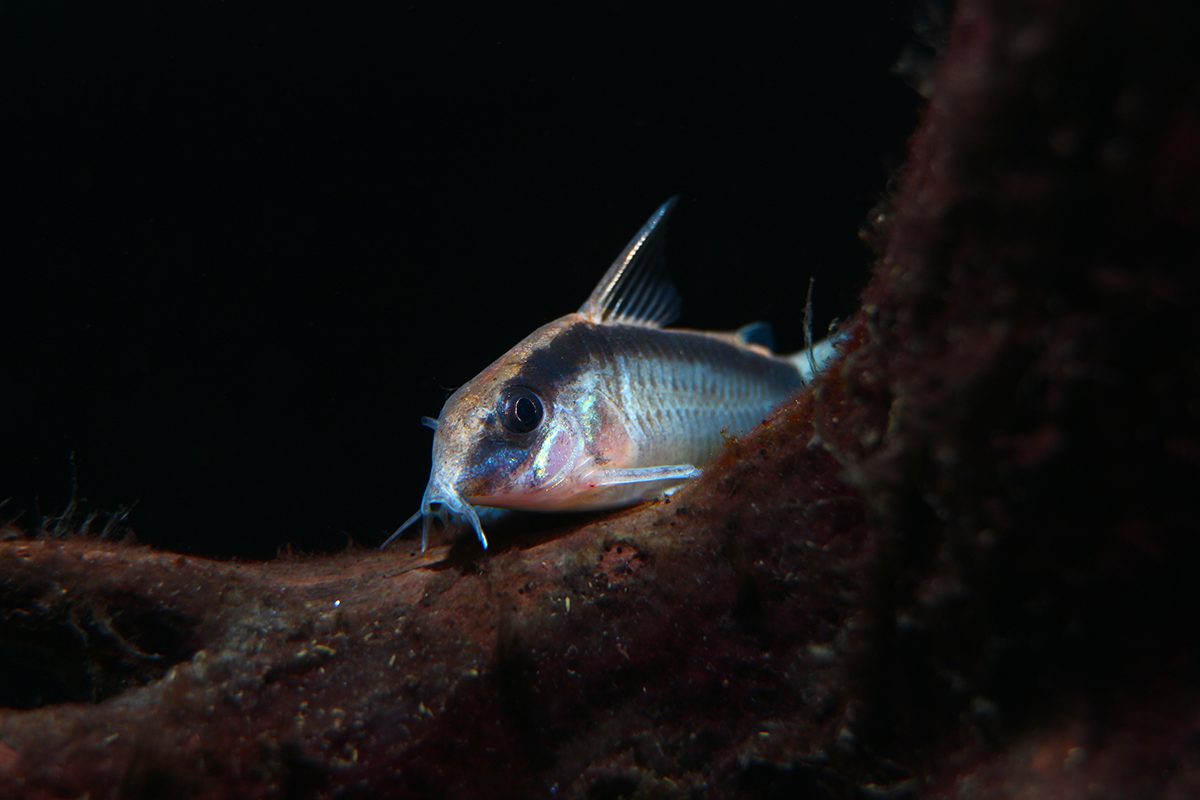Characteristics/origin
The skunk corydoras has its appearance to thank for its species name, arcuatus. Arcuatus means “bowed” and plays on the bow-shaped black band that stretches from its mouth to its tail fin. This makes it easy to tell it apart from other catfish.
The skunk corydoras comes from South America. They are mainly found in the rivers of Peru, in the fast-flowing tributaries of the upper Amazon. Kept correctly, they can grow to up to 6 cm in length and live to be 8 years old. Their main distinguishing feature is that the females are plumper and bulkier than the males.
Aquarium and water
To create an appropriate habitat, the aquarium should have a volume of at least 60 litres. Corydoras arcuatus prefer tropical temperatures of 22°C to 26°C. The water should be slightly acidic to slightly alkaline (pH value: approx. 6.0 – 7.5). A general hardness of 2 – 19° dGH is also recommended, but they can also be kept in slightly softer or harder water. However, skunk corydoras require clear water with lots of oxygen and an aquarium with good water circulation.
Keeping conditions
Corydoras arcuatus are sociable fish and should therefore be kept in a small group of at least 5 creatures. Due to their peaceful nature, they are well-suited to community tanks. They mix particularly well with peaceful fish that live in the middle to upper regions of the tank, such as small species of characin. Skunk corydoras live at the bottom of the aquarium.

Planting and decoration
The aquarium should have dense vegetation around the edges for the Corydoras arcuatus. They should also have plenty of places to hide, for example using bogwood root. Skunk corydoras feed along the bottom of the tank; the substrate must therefore be fine with no sharp edges so that they do not hurt themselves.
Diet
Skunk corydoras are omnivores and require a varied, balanced diet. TetraMin and Tetra Tablets TabiMin are particularly good for this species. For extra variety, you can also feed them Tetra FreshDelica Bloodworms, for example.

